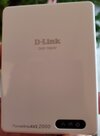Just fired up my new Lincoln today after getting a new Maco V58 assembled, tuned and installed.
The Maco V58 had SWR readings 6 feet off the ground of 1.3:1 on channel 1, 1.1:1 on channel 20 and 1.2:1 on channel 40. I messed with it for quite a while but this was the best I could do. Then I had some friends help me get it up on a 30 foot pole. The SWR stayed about the same on channels 1 and 20 but climbed to 1.5:1 on channel 40. That's not bad enough for me to consider taking it down again yet to try to drop a few decimals off the channel 40 SWR.
The mast is grounded and the RG-213 coax is grounded too via a MFJ 272 - Lightning Surge Protector. I am using a new Pyramid PSV-300 power supply on a dedicated 20 amp, 120 volt circuit. A new MFJ-800 SWR/wattmeter is inline too. Patch cables are new 2 foot lengths of RG8x.
All I am getting right now is a solid S5-7 of static and clicking on all CB channels. If I turn the RF gain down a bit I am just left with the clicking. On some non-CB frequencies I sampled listening to I get the static and clicking while on others I do not (they are very quiet). I was not getting this static and clicking when the antenna was only 6 feet in the air during tuning. The antenna is not near any metallic structures, no power lines (they are all underground), etc.
Here's what it sounds like on AM:
And on LSB:
Here's a sample of some frequencies where I get the static and clicking:
25.215
26.185
26.965 to 27.405
27.855
Here's a sample of some frequencies where I do NOT get the static and clicking:
24.895
28.485
29.395
29.485
29.805
I went around the house and turned off all LED lights and dimming lights because I have had them cause noise in a shortwave radio before but it made no difference now. The NB/ANL make no appreciable difference.
Do you think this is just the current atmospherics or could it be something in the radio or power supply or SWR meter or new RG-213 coax or new Maco V58 antenna?
I must say I am quite deflated with what I am hearing right now. I sure hope I can resolve this issue quickly.
This stuff is replacing a President HR2510 and Maco M103C that was lost in a bad storm.
The Maco V58 had SWR readings 6 feet off the ground of 1.3:1 on channel 1, 1.1:1 on channel 20 and 1.2:1 on channel 40. I messed with it for quite a while but this was the best I could do. Then I had some friends help me get it up on a 30 foot pole. The SWR stayed about the same on channels 1 and 20 but climbed to 1.5:1 on channel 40. That's not bad enough for me to consider taking it down again yet to try to drop a few decimals off the channel 40 SWR.
The mast is grounded and the RG-213 coax is grounded too via a MFJ 272 - Lightning Surge Protector. I am using a new Pyramid PSV-300 power supply on a dedicated 20 amp, 120 volt circuit. A new MFJ-800 SWR/wattmeter is inline too. Patch cables are new 2 foot lengths of RG8x.
All I am getting right now is a solid S5-7 of static and clicking on all CB channels. If I turn the RF gain down a bit I am just left with the clicking. On some non-CB frequencies I sampled listening to I get the static and clicking while on others I do not (they are very quiet). I was not getting this static and clicking when the antenna was only 6 feet in the air during tuning. The antenna is not near any metallic structures, no power lines (they are all underground), etc.
Here's what it sounds like on AM:
And on LSB:
Here's a sample of some frequencies where I get the static and clicking:
25.215
26.185
26.965 to 27.405
27.855
Here's a sample of some frequencies where I do NOT get the static and clicking:
24.895
28.485
29.395
29.485
29.805
I went around the house and turned off all LED lights and dimming lights because I have had them cause noise in a shortwave radio before but it made no difference now. The NB/ANL make no appreciable difference.
Do you think this is just the current atmospherics or could it be something in the radio or power supply or SWR meter or new RG-213 coax or new Maco V58 antenna?
I must say I am quite deflated with what I am hearing right now. I sure hope I can resolve this issue quickly.
This stuff is replacing a President HR2510 and Maco M103C that was lost in a bad storm.

